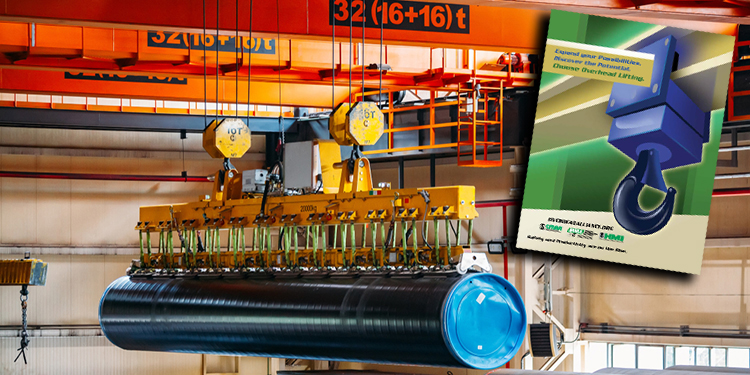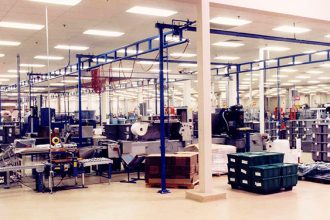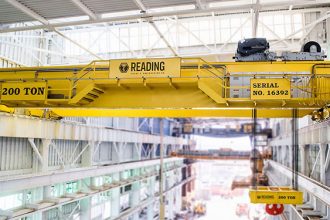Customization Delivers Exactly The Overhead Lifting Solution You Need

This is the fourth in a series of posts detailing 13 reasons why overhead lifting and handling technologies — specifically cranes, hoists, and monorails — can improve a manufacturing or distribution operation’s efficiency, productivity, safety, and sustainability. Read more in the free Overhead Alliance publication, “Expand Your Possibilities. Discover the Potential. Choose Overhead Lifting.”
Only in the rarest of circumstances are two overhead handling applications identical. Whether it’s the location (inside or outside), height of the ceiling (low or high), or the building’s construction (closely spaced columns or none; different footprint and square footage), the physical location is nearly always different.
Further, there are inherent differences in every type of load to be handled. Some are irregularly shaped, extremely heavy, or exceptionally fragile. Others are small, lightweight, and moved quickly from one manual process to another.
Because of this broad range of disparate requirements, it naturally follows that every overhead lifting solution is customized to some degree. This customization enables the overhead cranes, hoists, workstation cranes, and monorails being utilized to meet the unique application needs and physical surroundings while delivering maximum operational productivity and efficiency.
There are, of course, many standardized versions of each of these types of overhead handling technologies. The majority of manufacturers design and use standard, modular components that can be assembled in a variety of customized ways to adapt their systems to meet the unique requirements of the handled loads and the spaces in which they are moved. Available in a wide range of configurations and price points, this customization of standard components approach ensures that multiple application specifications can be met cost-effectively.
Additionally, custom-engineered overhead lifting solutions can be created. While frequently more expensive than systems built from standard components, these types of overhead handling solutions can be the most economical option in a facility with high performance requirements, low overhead space, or building obstructions. Indeed, an engineered, multi-part solution — such as one that serves multiple workstations — might be the most efficient use of space while increasing operator productivity and load control.
Whether custom-engineered or constructed from standard components, overhead handing solutions offer a variety of flexible features. These include:
- Cranes and monorails can be easily and economically adapted to accommodate most facility configurations and applications. They can also operate in any building to meet unique operational needs or load specifications.
- Hoists can be used both inside and outdoors and can be easily supplied with higher lifting capability through the addition of a longer chain — such as those utilized in manual or electric chain hoists. Further, a broad range of hoists can be outfitted with load handling attachments on site, enabling them to interface with different types of loads.
When assessing a potential crane system, be sure to specify the following:
- Weight of the load, frequency of load movements, distance traveled, type, and dimensions of the load
- Length, width and height of the area to cover, obstructions, and clear height overhead
- Environmental conditions, indoor or outdoor location, ambient temperature, and other external factors
- For a complete list of crane selection criteria, download a copy of the Buyer’s Guide, published by the Crane Manufacturers Association of America (CMAA).
Looking for more details about the efficiency and productivity benefits overhead handling systems can provide your operation? MHI’s Overhead Alliance (which includes the Crane Manufacturers Association of America (CMAA), the Hoist Manufacturers Institute (HMI), and the Monorail Manufacturers Association (MMA)) explores 13 different ways these technologies enhance manufacturing and distribution operations in the free publication, “Expand Your Possibilities. Discover the Potential. Choose Overhead Lifting.”



